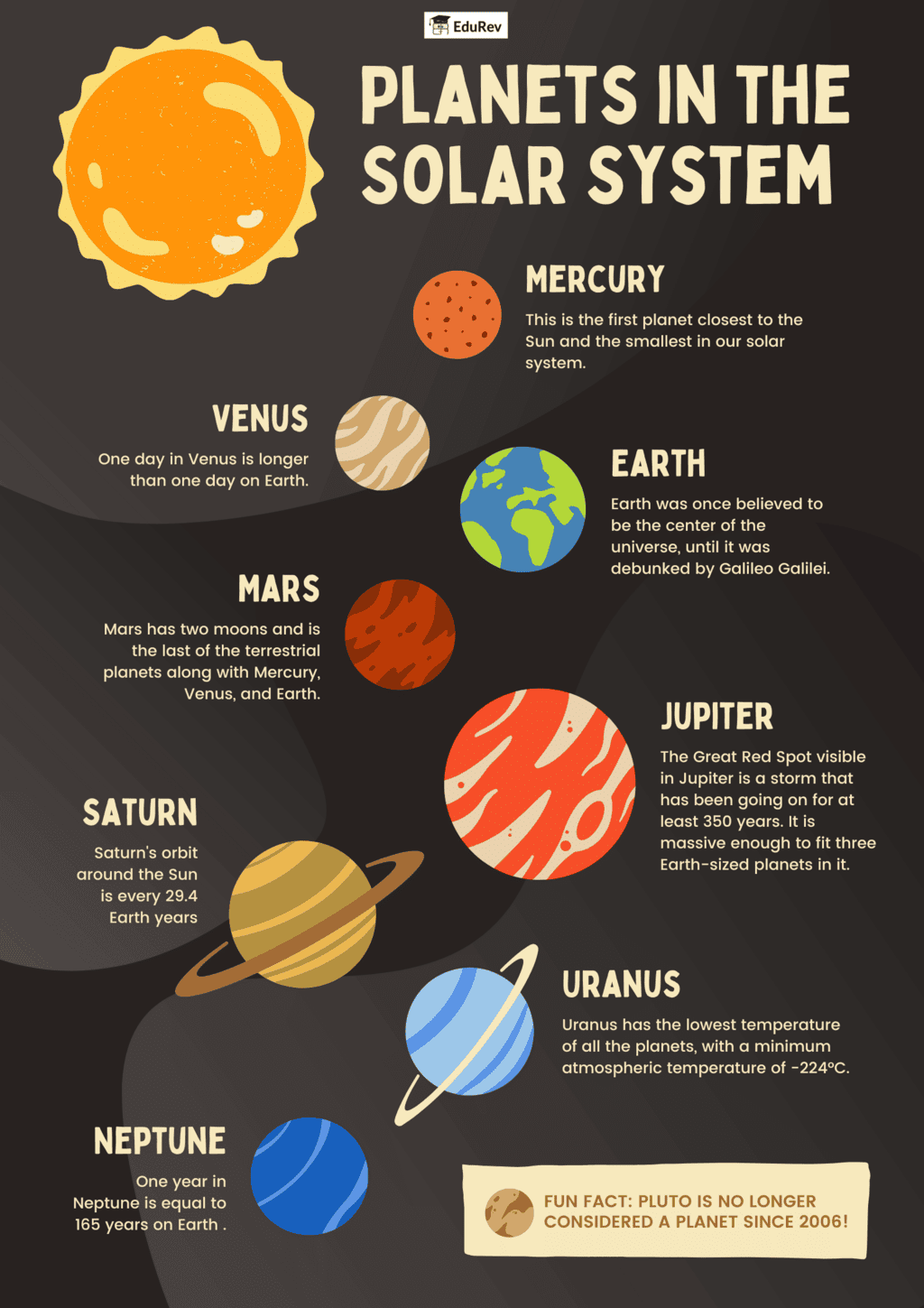Class 4 Exam > Class 4 Notes > Science for Class 4 > Poster: The Solar System
Poster: The Solar System | Science for Class 4 PDF Download

The document Poster: The Solar System | Science for Class 4 is a part of the Class 4 Course Science for Class 4.
All you need of Class 4 at this link: Class 4
|
49 videos|156 docs|34 tests
|
FAQs on Poster: The Solar System - Science for Class 4
| 1. What are the main components of the Solar System? |  |
Ans.The Solar System consists of the Sun, which is a star at its center, and all celestial bodies that are bound to it by gravity. This includes eight planets (Mercury, Venus, Earth, Mars, Jupiter, Saturn, Uranus, and Neptune), their moons, dwarf planets like Pluto, asteroids, comets, and meteoroids.
| 2. How did the Solar System form? |  |
Ans.The Solar System formed about 4.6 billion years ago from a giant molecular cloud. The cloud collapsed under its own gravity, leading to the formation of the Sun in the center, while the remaining material clumped together to form the planets, moons, and other objects.
| 3. What is the difference between a planet and a dwarf planet? |  |
Ans.A planet is a celestial body that orbits the Sun, is spherical in shape, and has cleared its orbit of other debris. A dwarf planet, on the other hand, also orbits the Sun and is spherical, but has not cleared its orbital path of other objects. Examples of dwarf planets include Pluto and Eris.
| 4. What are the characteristics of the inner and outer planets? |  |
Ans.The inner planets (Mercury, Venus, Earth, and Mars) are rocky and smaller, with solid surfaces and relatively high densities. The outer planets (Jupiter, Saturn, Uranus, and Neptune), known as gas giants (and ice giants in the case of Uranus and Neptune), are larger, have thick atmospheres, and lack solid surfaces.
| 5. How do the orbits of planets differ? |  |
Ans.The orbits of planets differ in terms of shape, distance from the Sun, and duration of revolution. Most planetary orbits are elliptical, with the inner planets having shorter orbits and completing a revolution around the Sun in less time compared to the outer planets, which have longer and more circular orbits.
Related Searches





















